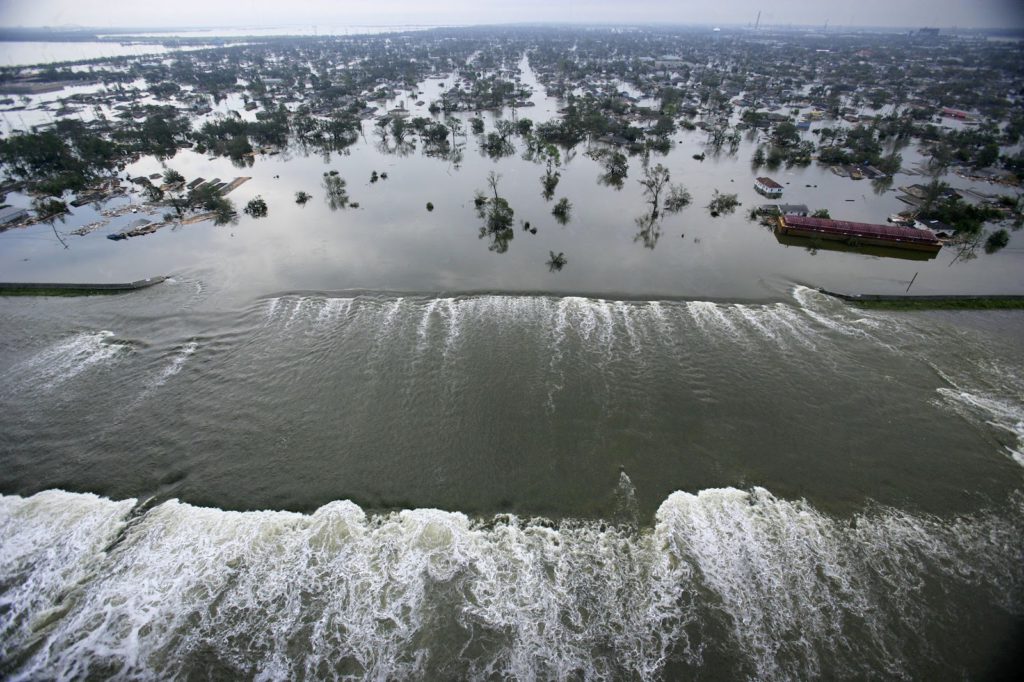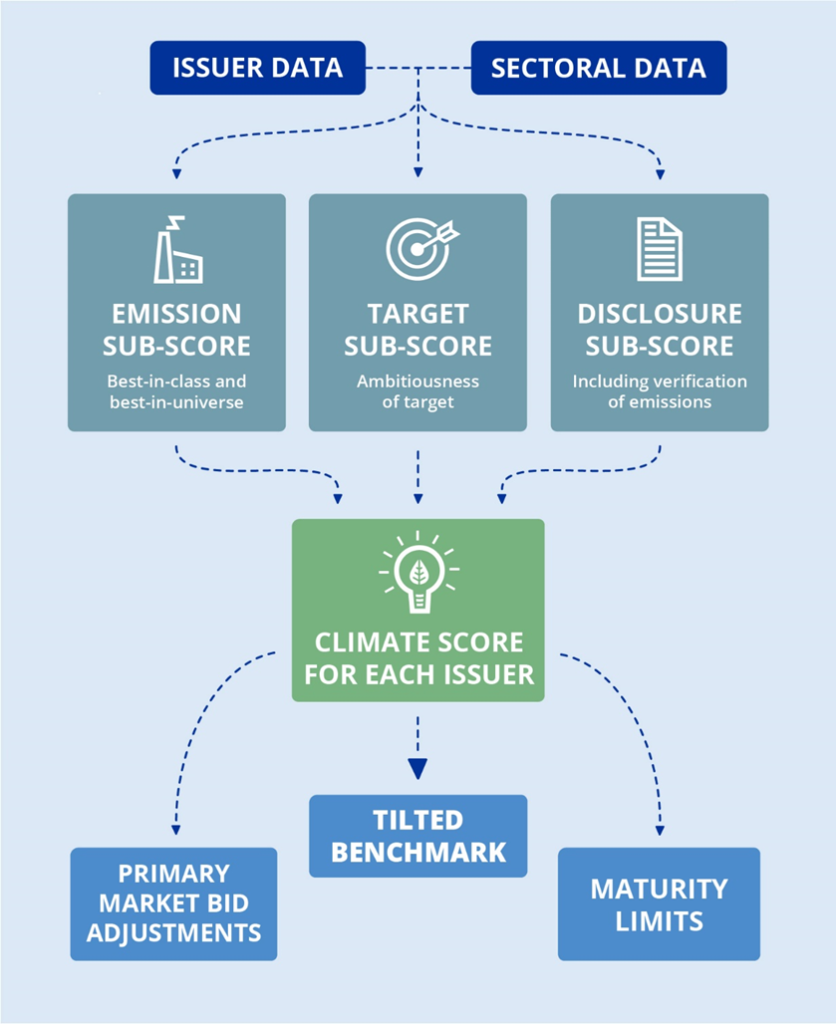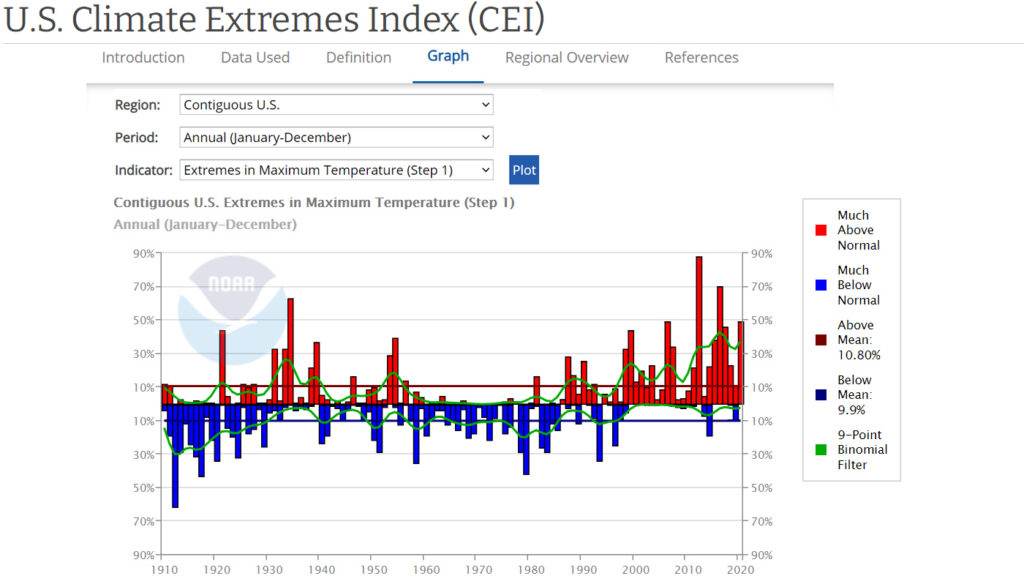|
|
In an era of increasing climate variability and extreme weather events, federal agencies play a vital role in safeguarding critical assets and infrastructure. This guide is a comprehensive resource for federal agencies to understand, assess, and effectively manage the risks that extreme weather poses to their assets. From identifying vulnerabilities to implementing resilience measures, this guide provides essential insights and strategies to ensure the continued functionality and protection of valuable assets in the face of ever-changing weather patterns.
What is Extreme Weather Risk Asset Management?
Extreme Weather Risk Asset Management is the comprehensive process of recognizing, evaluating, and proactively mitigating the risks posed by extreme weather events to various assets. This multifaceted approach encompasses the development of strategies and the execution of measures aimed at safeguarding assets from the potential damage and disruptions caused by severe weather conditions. The core objective of Extreme Weather Risk Asset Management is to minimize the adverse impacts of weather-related events on critical infrastructure, transportation systems, and a wide range of valuable assets.
The Importance of Extreme Weather Risk Asset Management
Extreme Weather Risk Asset Management is paramount for Federal Agencies as it helps ensure the safety and functionality of transportation systems, infrastructure, and other critical assets. By proactively addressing the risks posed by extreme weather events, Federal Agencies can minimize the economic impact and disruptions caused by asset damage.
For example, effective asset management can prevent costly disruptions to port facilities, roads, and bridges during hurricane events in regions prone to hurricanes, such as the Gulf Coast. By reinforcing infrastructure and transportation assets to withstand extreme weather, Federal Agencies safeguard public safety and reduce the financial burden associated with post-disaster repairs and recovery efforts.
The Role of Federal Agencies in Extreme Weather Risk Asset Management

Image Credit: Smashwords.com
Federal Agencies play a crucial role in Extreme Weather Risk Asset Management. They are responsible for developing and implementing policies, frameworks, and investment strategies to address risks associated with extreme weather events.
For instance, the Federal Emergency Management Agency (FEMA) establishes disaster preparedness and response guidelines, assisting state and local governments in enhancing their asset management practices to withstand extreme weather events like floods and wildfires.
Additionally, Federal Agencies provide guidance, resources, and technical expertise to support asset managers in conducting risk assessments and developing effective asset management plans. For example, the Department of Transportation (DOT) offers tools and funding opportunities to state and local transportation agencies to improve the resilience of their road networks in the face of extreme weather challenges, thereby ensuring the continued mobility of communities.
Through collaboration and coordination, Federal Agencies contribute significantly to enhancing the nation’s preparedness and resilience in the wake of extreme weather events.
How Does Extreme Weather Impact Assets?
Extreme weather events can significantly impact assets, leading to damage, disruption, and even loss of functionality. Understanding the relationship between extreme weather and asset damage is vital in assessing and managing the risks posed by these events.
The Relationship between Extreme Weather and Asset Damage
Extreme weather events such as floods, storms, and hurricanes can profoundly and often destroy infrastructure, transportation systems, and other assets. High winds, heavy rainfall, and rising sea levels can weaken the structural integrity of buildings, bridges, and critical components, making them vulnerable to damage or failure. Extreme temperatures, whether excessively hot or cold, can also affect the overall condition of assets, leading to accelerated deterioration and a reduced lifespan.
Everyday Extreme Weather Events that Affect Assets

Various extreme weather events routinely affect assets, posing substantial risks to their functionality and longevity. These events include floods, storms, droughts, and hurricanes, all of which have specific ways of causing damage. For example:
- Floods: Floodwaters can inundate roads, bridges, and infrastructure, eroding their foundations and disrupting transportation systems. An illustration of this impact can be seen in the aftermath of Hurricane Katrina, where extensive flooding severely damaged the New Orleans levee system, resulting in widespread devastation.
- Storms and Hurricanes: These weather phenomena bring high winds, heavy rain, and coastal surges that can cause wind damage, flooding, and coastal erosion. Hurricane Sandy, for instance, caused substantial damage to infrastructure along the East Coast of the United States, including damage to subway systems, power outages, and extensive flooding in New York City.
- Droughts: Prolonged drought conditions can lead to soil instability and subsidence, compromising the stability of structures and transport networks. The California drought of 2012-2016, one of the most severe on record, caused land subsidence in the Central Valley, damaging water conveyance infrastructure and posing long-term risks to the state’s water supply system.
The Economic Cost of Extreme Weather on Assets

Image Credit: Newsweek
The economic cost of extreme weather events on assets is significant and multifaceted. The damage inflicted by floods, storms, hurricanes, and other extreme weather events often results in staggering repair and restoration costs, running into billions of dollars. Furthermore, disruptions to transportation systems and critical infrastructure can have far-reaching economic consequences.
These disruptions affect various industries, hamper business operations, and sometimes lead to widespread economic downturns. For instance, the economic toll of Hurricane Katrina in 2005 exceeded $160 billion, primarily due to extensive damage to assets and infrastructure and disruptions to the energy sector. These examples underscore the urgent need for robust Extreme Weather Risk Asset Management strategies to mitigate such events’ economic and societal impacts.
How to Assess Extreme Weather Risks on Assets?
Assessing extreme weather risks on assets is critical in effectively managing these risks. By conducting a comprehensive risk assessment, Federal Agencies can identify vulnerabilities, determine the probability of extreme weather events, and develop appropriate strategies to mitigate the risks.
Conducting an Extreme Weather Risk Assessment
An extreme weather risk assessment is a systematic, data-driven process to identify and evaluate the assets’ vulnerabilities to the impacts of extreme weather events. By conducting such assessments, asset managers can gain valuable insights into the potential consequences of severe weather conditions and effectively prioritize their mitigation efforts.
Incorporating Climate Change into Risk Assessment

Credit Image: ecb.europa.eu
Climate change is a critical factor influencing the frequency and severity of extreme weather events. To develop comprehensive risk assessment strategies, Federal Agencies must incorporate climate change considerations into their processes. This approach allows asset managers to account for current and future risks of changing climate patterns.
For example, as sea levels rise due to climate change, coastal assets such as ports and waterfront infrastructure face an increased risk of storm surges and flooding. Federal Agencies can proactively plan and implement measures to address these evolving challenges by integrating climate change data and projections into risk assessments.
Using Statistical Data to Determine Extreme Weather Frequency

Image Credit: NOAA Climate.Gov
Statistical data related to historical extreme weather events can provide valuable insights into their frequency and probability within specific regions. Federal Agencies can leverage this data to assess the likelihood of particular, extreme weather events occurring in their areas of interest. For instance, by analyzing historical weather records and climate models, agencies can estimate the probability of severe droughts, hurricanes, or heat waves.
This information is foundational in resource allocation and decision-making processes, guiding agencies in effectively prioritizing risk mitigation measures. For example, in regions with frequent hurricanes, agencies can prioritize investments in hurricane-resistant infrastructure and evacuation plans to protect critical assets and communities.
What are the Strategies to Manage Extreme Weather Risks?
To manage extreme weather risks effectively, Federal Agencies need to develop and implement strategies that enhance the resilience of assets and reduce their vulnerability to extreme weather events.
Developing a Transportation Asset Management Plan
A Transportation Asset Management Plan (TAMP) is a comprehensive framework that guides the effective management of transportation assets. An essential component of any TAMP is incorporating strategies and actions explicitly tailored to address the vulnerabilities and risks posed by extreme weather events. This plan requires continuous inspections, maintenance activities, and updates to ensure that transportation infrastructure remains resilient and fully operational.
Enhancing Resilience of Infrastructure to Extreme Weather
One of the primary objectives in developing a TAMP is to bolster the resilience of transportation infrastructure, thereby better-managing risks associated with extreme weather. Achieving this resilience entails designing and constructing assets that can withstand the adverse impacts of extreme weather events. For instance, in hurricane-prone regions, transportation agencies may reinforce bridges and overpasses to withstand high winds, improve drainage systems to mitigate flooding and utilize resilient materials that can endure extreme weather conditions without deteriorating.
Applying Environmental and Engineering Solutions for Risk Mitigation
Successfully mitigating risks related to extreme weather events relies on applying a combination of environmental and engineering solutions. These solutions encompass a spectrum of measures, including the implementation of robust flood control systems to prevent inundation, the erection of coastal protection structures to shield assets from storm surges, and the integration of green infrastructure into transportation planning to enhance resilience. By adopting these strategies, transportation agencies can effectively reduce the vulnerability of their assets and minimize the overall impact of extreme weather events on the transportation network.
How Can Federal Agencies Assist in Extreme Weather Risk Asset Management?
Federal Agencies are crucial in assisting asset managers in effectively managing extreme weather risks.
The Role of DOT in Extreme Weather Risk Asset Management
The Department of Transportation (DOT) plays a pivotal role in advancing and facilitating the management of extreme weather risks for various assets. It serves as a central agency responsible for providing essential guidance, allocating resources, and offering technical expertise to assist asset managers in effectively handling the challenges posed by extreme weather events. Through its multifaceted efforts, the DOT contributes significantly to enhancing asset resilience, ensuring the safety of transportation systems, and minimizing disruptions caused by extreme weather.
Recommendations for Federal Agencies to Improve Asset Management
Federal Agencies can substantially enhance their asset management practices by adopting several vital recommendations. Firstly, prioritizing investments in research and development initiatives dedicated to advancing the understanding of extreme weather risks is essential. Agencies can formulate more targeted and effective mitigation strategies by fostering a deeper comprehension of the intricacies of these risks.
Secondly, regular vulnerability assessments of assets and consistently updating asset management plans to reflect current and future risks are paramount. This dynamic approach ensures that asset management remains adaptive and aligned with the evolving landscape of extreme weather challenges, ultimately bolstering the resilience of critical assets.
Insights from Pilot Programs on Extreme Weather Risk Asset Management
Pilot programs focusing on extreme weather risk asset management have yielded invaluable insights and established best practices for Federal Agencies. These programs have served as experimental platforms, allowing agencies to explore and test various strategies, tools, and methodologies for effectively assessing and managing extreme weather risks.
The knowledge gained from these pilot initiatives serves as a valuable repository of information, offering evidence-based guidance to inform and shape future asset management practices. By harnessing the lessons learned from these programs, Federal Agencies can proactively refine their approaches, thus ensuring that their assets are better prepared to withstand the challenges posed by extreme weather events.
Frequently Asked Question
Extreme Weather Risk Asset Management is a guide designed for federal agencies to help them understand and mitigate the risks associated with climate change and extreme weather events.
Powerful Weather Risk Asset Management provides insights and recommendations on incorporating climate change and extreme weather scenarios into transportation asset management plans.
The Department of Transportation (DOT) oversees the transportation asset management process and ensures that federal agencies consider climate change and extreme weather events in their decision-making processes.
Exploring the ecological sensitivity of transportation assets helps identify vulnerabilities and determine the extent of exposure to climate change and extreme weather events. This analysis is crucial for effective risk management.
A climate change scenario is a hypothetical representation of future climatic conditions based on scientific projections. These scenarios help assess the potential impacts of climate change on transportation assets.
Federal agencies can select climate change scenarios by considering the severity and frequency of extreme weather events, the potential for sea level rise, and the sensitivity of transportation assets to climate-related hazards.
The Federal Highway Administration (FHWA) provides guidance and resources to federal agencies for incorporating climate change and extreme weather risks into their transportation asset management plans. They also conduct reviews to ensure compliance with best practices.
Federal agencies can overcome the challenges associated with extreme weather risk asset management by adopting a quantitative approach, conducting thorough vulnerability assessments, and integrating risk reduction strategies into their decision-making processes.
A transportation asset management portfolio collects a federal agency’s transportation assets. Managing this portfolio involves prioritizing investments, conducting risk assessments, and developing maintenance and operation strategies.
Federal agencies can ensure the structural integrity of transportation assets by conducting regular inspections, implementing appropriate maintenance and repair measures, and considering the potential impacts of climate change and extreme weather events in their asset management plans.
Conclusion
Extreme Weather Risk Asset Management is a critical process for Federal Agencies to protect infrastructure, transportation systems, and other assets from the adverse impacts of extreme weather events. By effectively assessing and managing these risks, Federal Agencies can ensure the resilience and functionality of assets, minimize disruptions, and reduce the economic impact of extreme weather events. Federal Agencies must continue investing in research, resources, and expertise to enhance asset management practices and address the challenges posed by current and future extreme weather risks.












